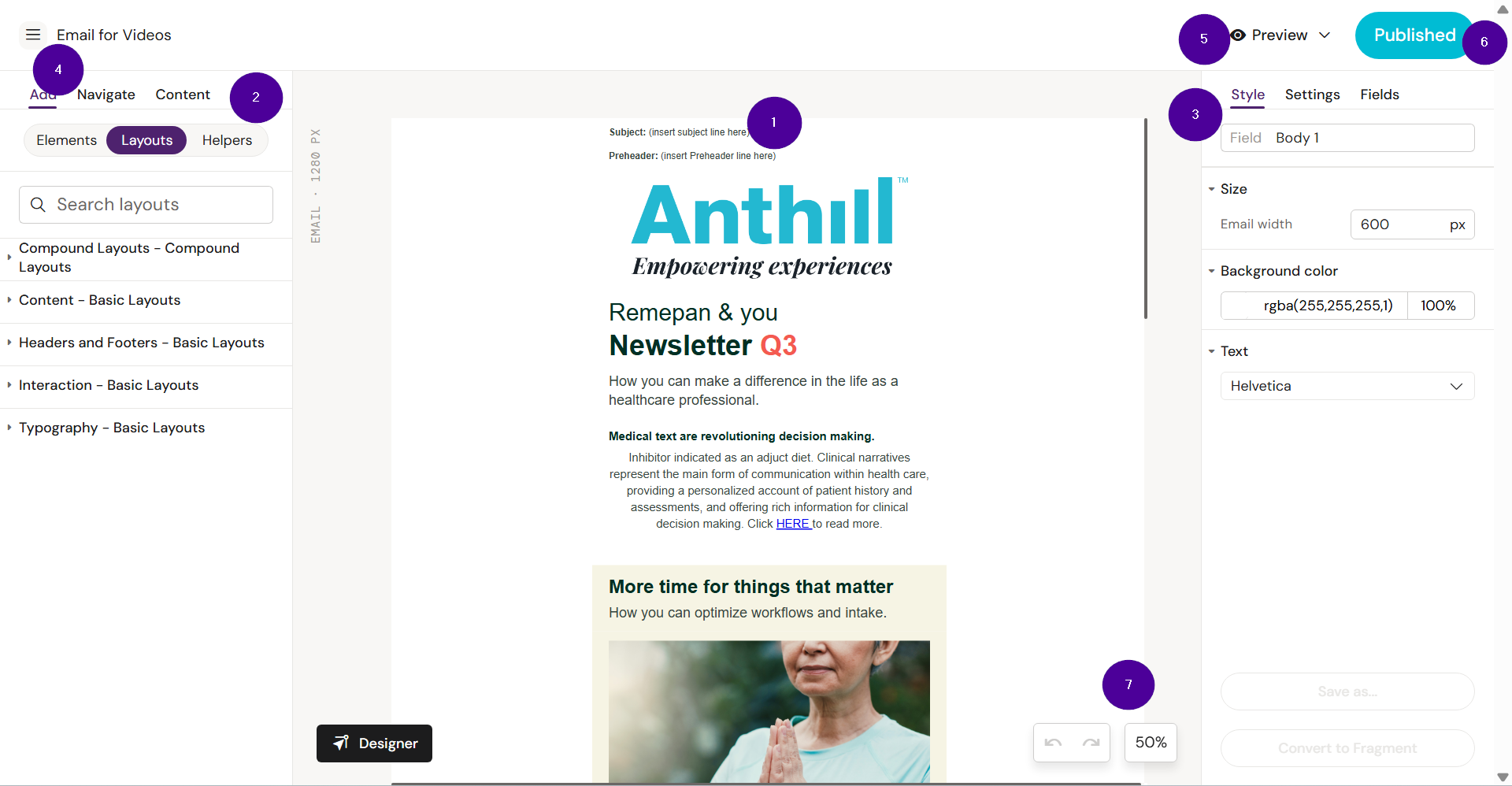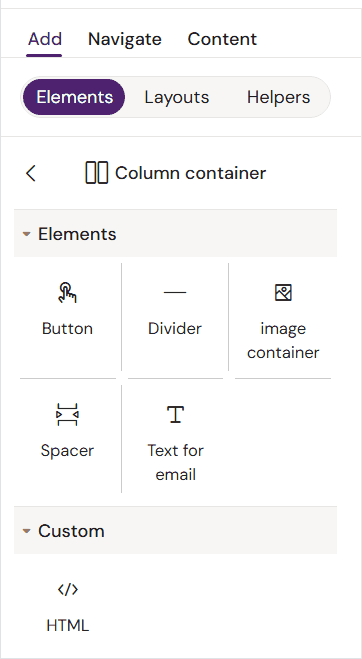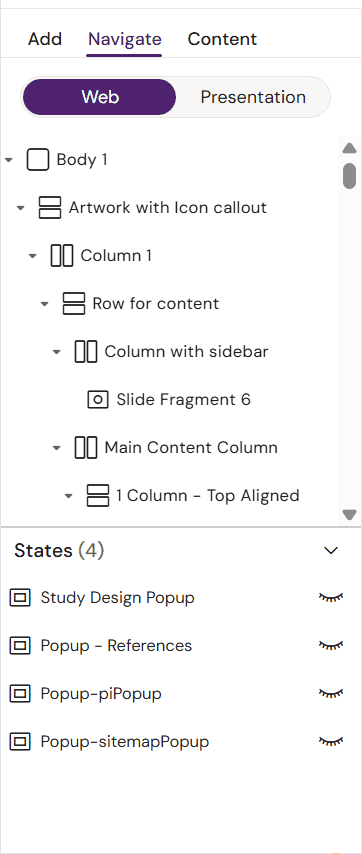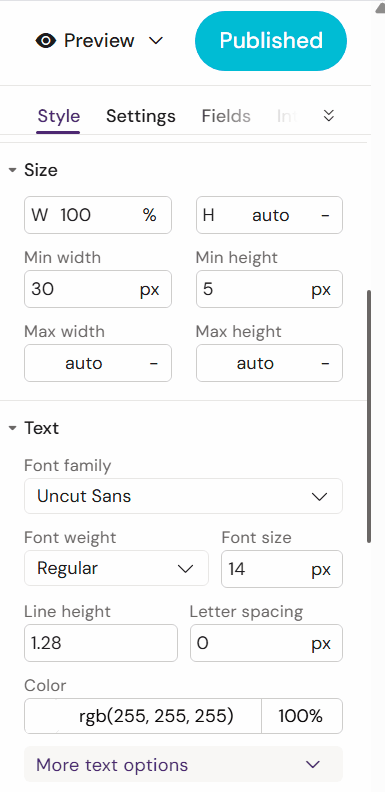Workspace UI
This is an overview of the interface as it appears when a document is open. The example shown is an Email document.
Overall View

1 - The Workspace is the main area in the center of your screen where you build and edit your content. Whether you're creating emails or slides, this is where you see your layout come together. You can add text, images, and other elements directly into the Workspace.
2 - The left panel* is where you will find ready to use content and tools to build new content.
3 - The right panel* is where you find tools to customize the content placed in the Workspace.
4 - The burger menu. Click on it to access the settings for the document, to view the document in your DAM, and go back to the Dashboard.
5 - Preview. Create a QR or link to preview (arrow down icon, or click the eye-icon to open the Activator Preview view.
6 - Publish button. When there are no changes to the document, this button is blue. Upon changes, it becomes purple and clicking it creates a new version of the document in your DAM.
7 - Undo/redo buttons and zoom.
3 - The left panel*
Add
Contains 3 sub-menus:
Elements - The smallest building blocks that are available to a user
Layouts - Prebuilt blocks of designed content, ready to use in your workspace
Helpers - A list of saved Layouts that already have text and images added

Navigate
Content contains 2 sub-menus.
Navigate/Web - This menu allows you to navigate the structure of your document.
Presentation - (Slides only) Shows which Binders the Slide is added to.

Content
Content contains 2 sub-menus.
Media - Import approved media and modular content.
Fragments - (Emails only) Contains a list of linked email fragments.

3 - The right panel*
Style - Displays styling options for the selected container or element.
Settings - Displays configuration options for the selected container or element.
Fields - Displays the available fields in the selected Layout. Fields can be optional or mandatory.
Interactions - (Slides only) Program interactions on the Slide or review existing interactions.

